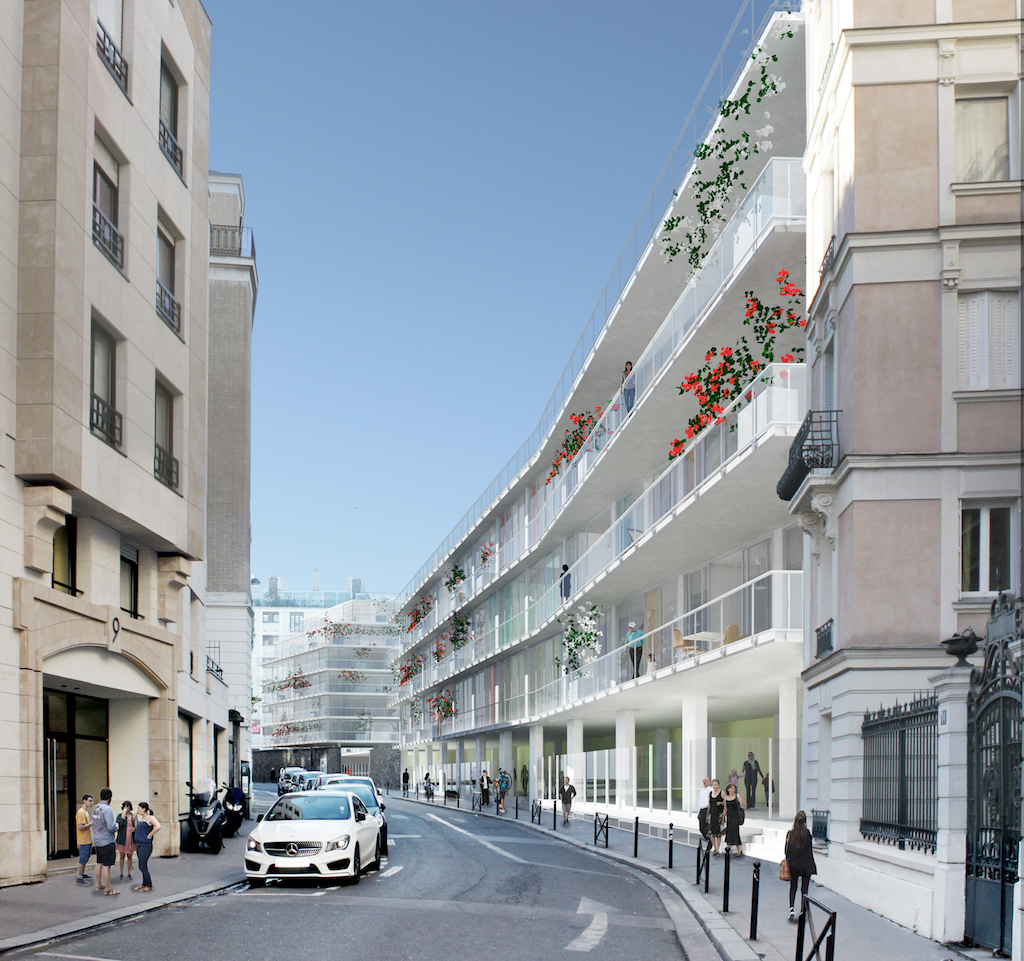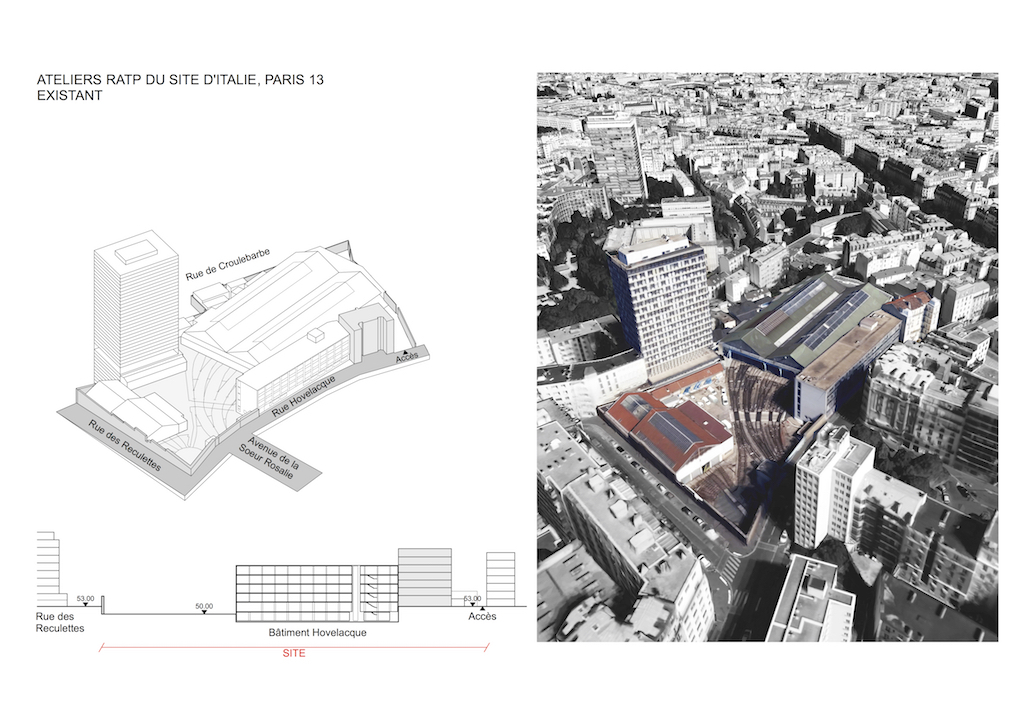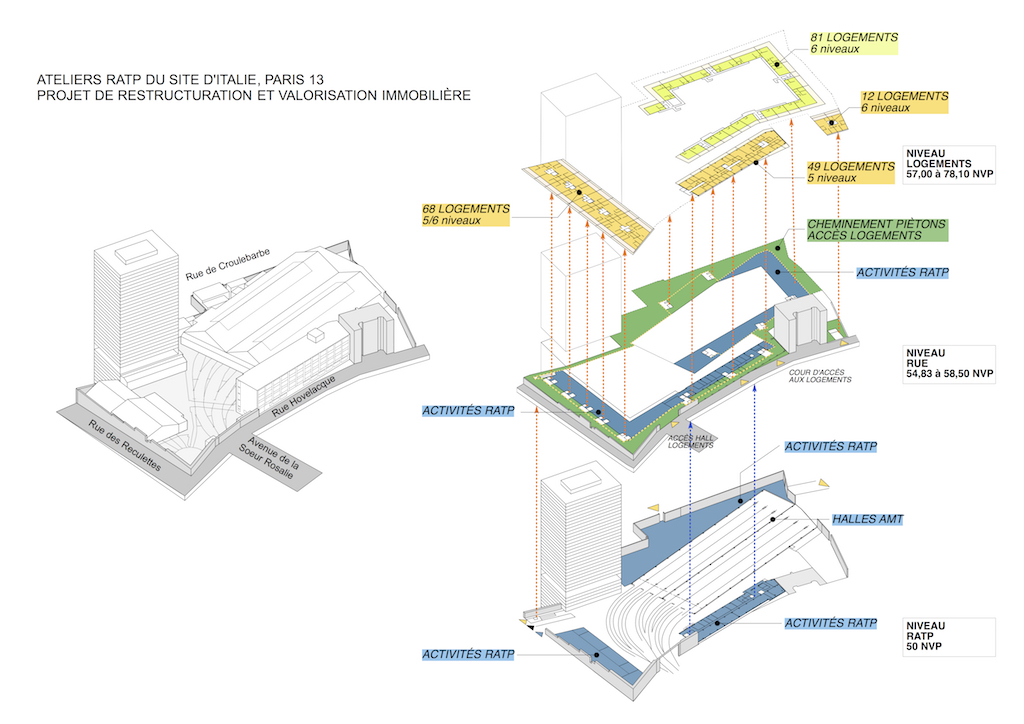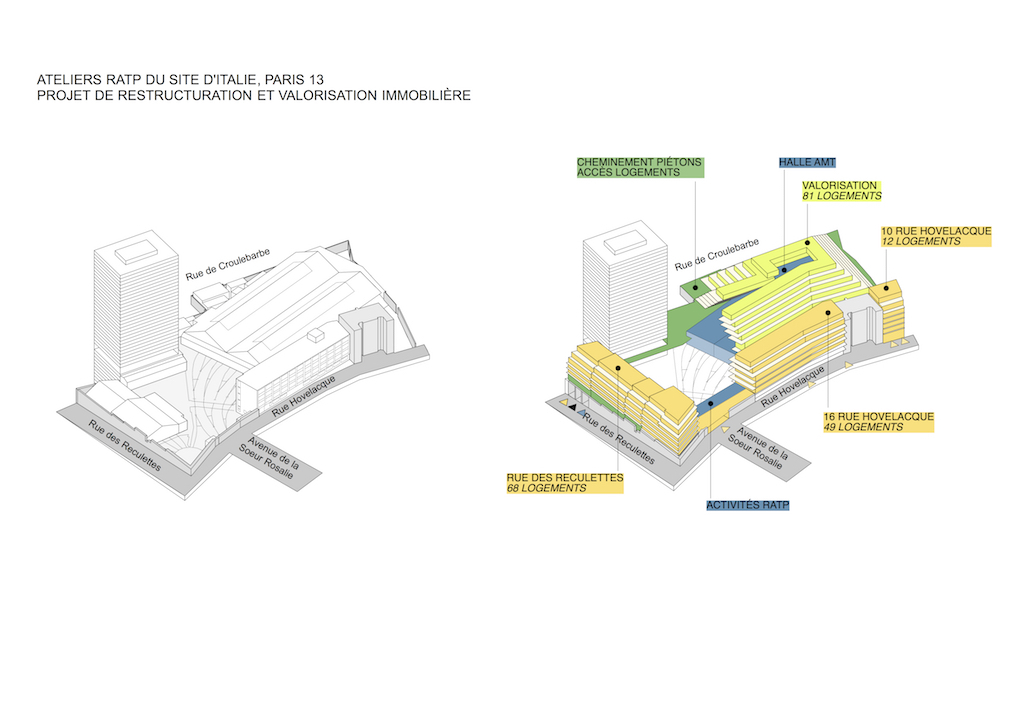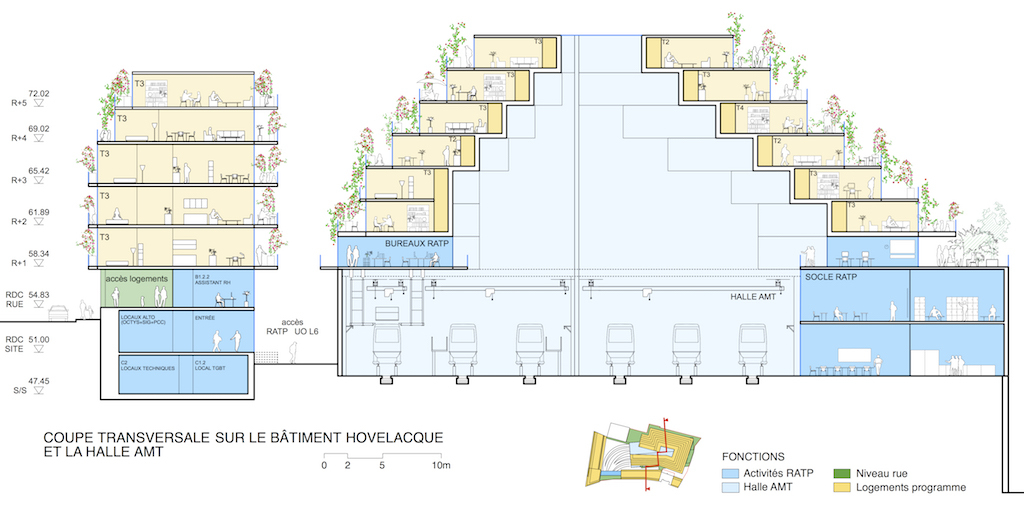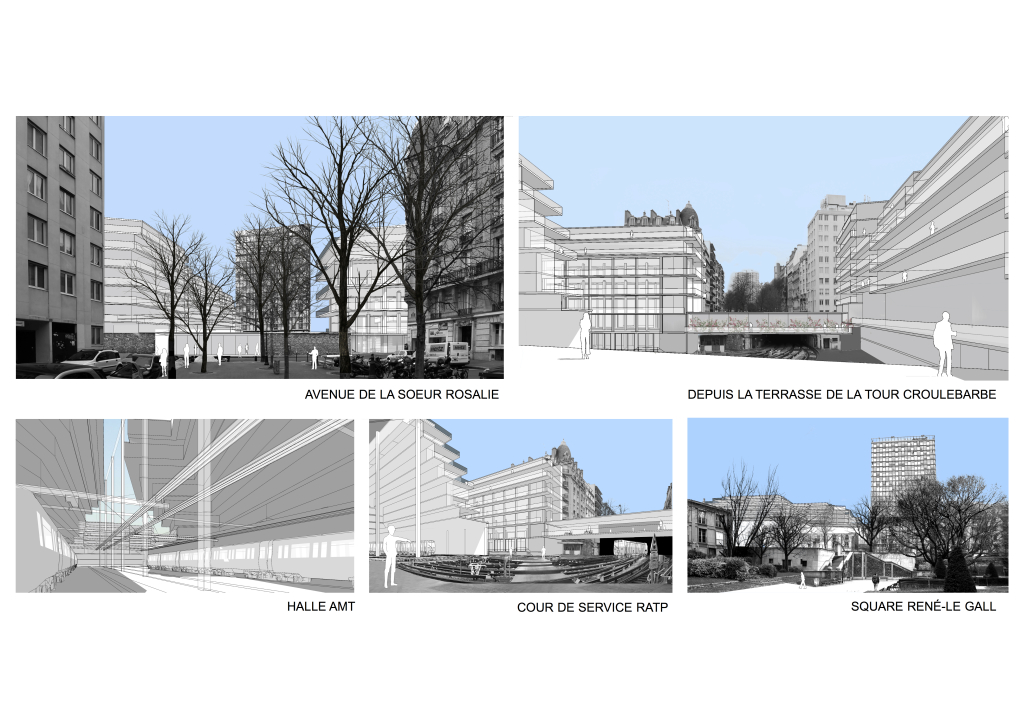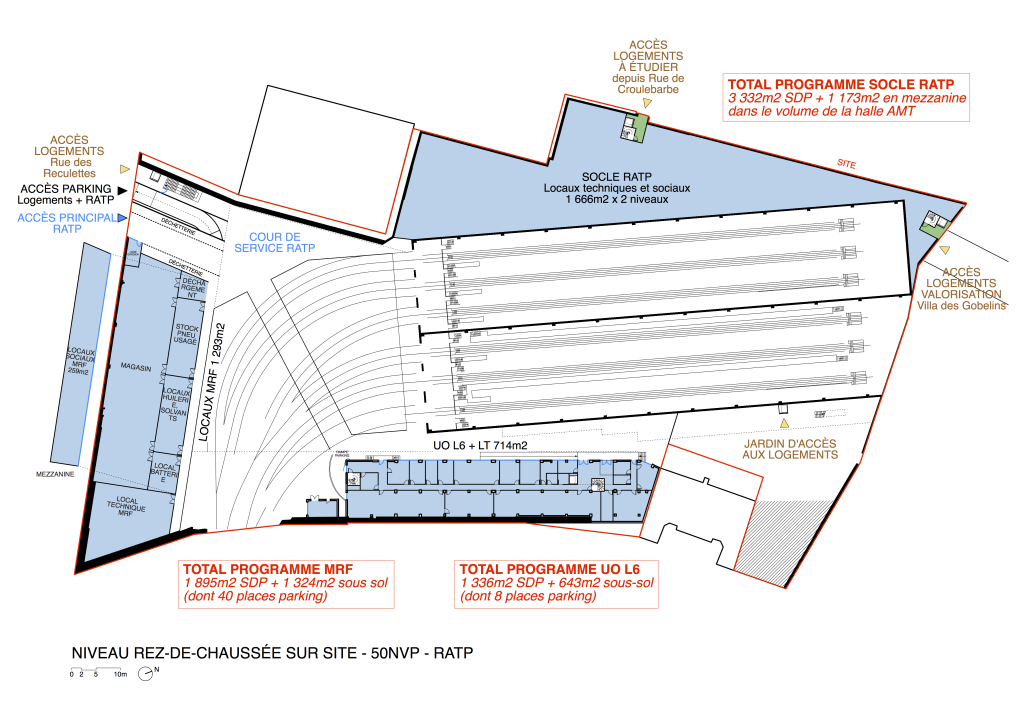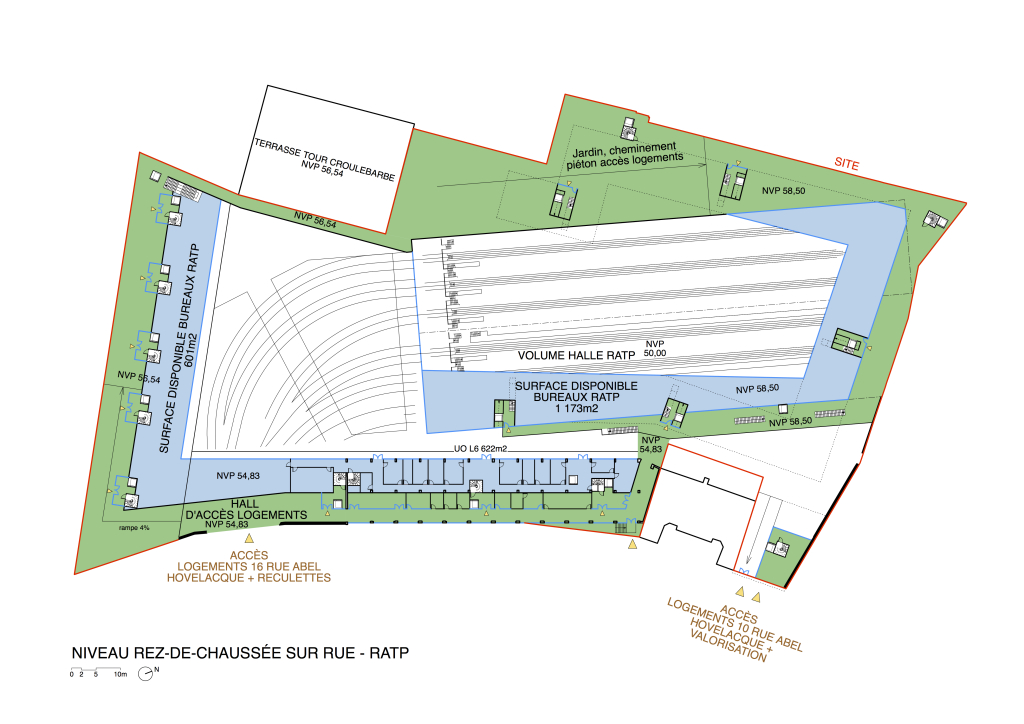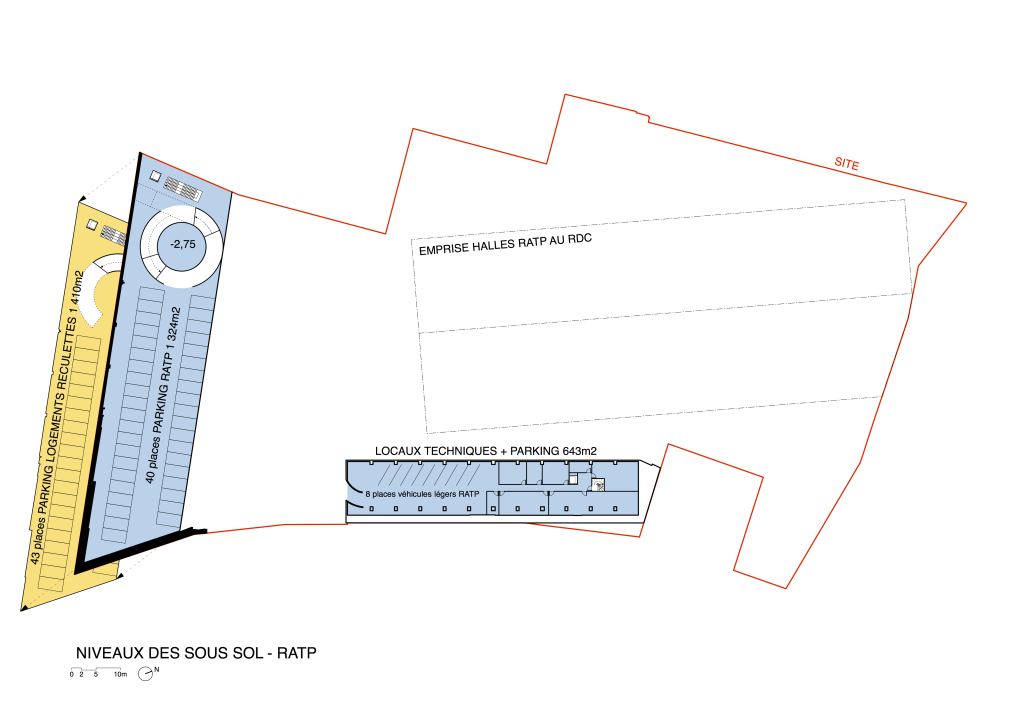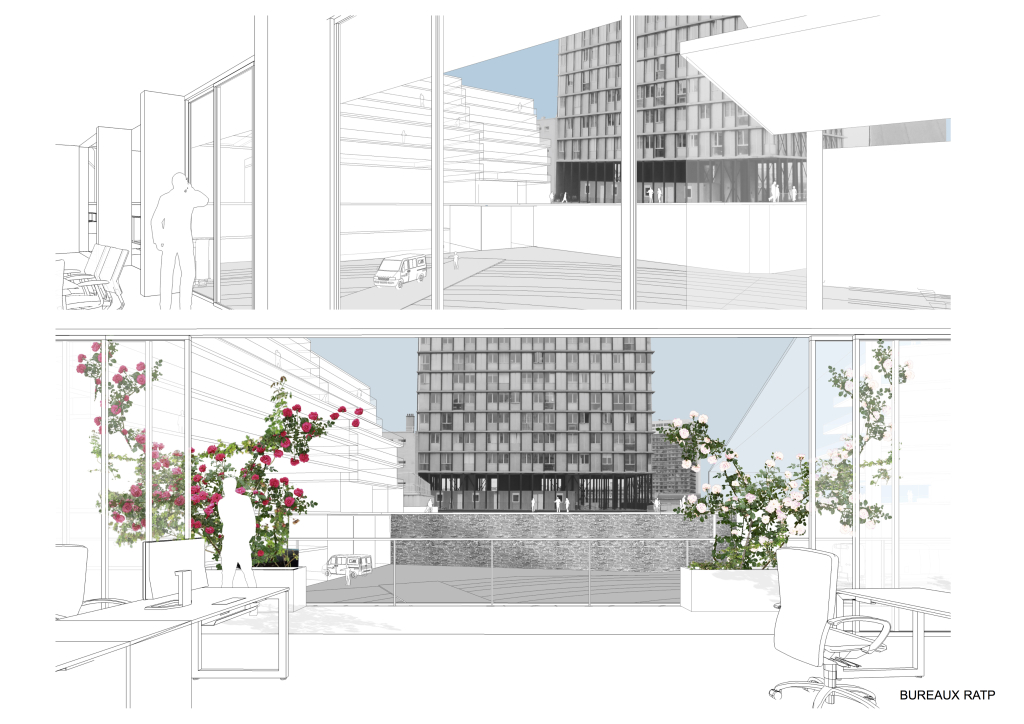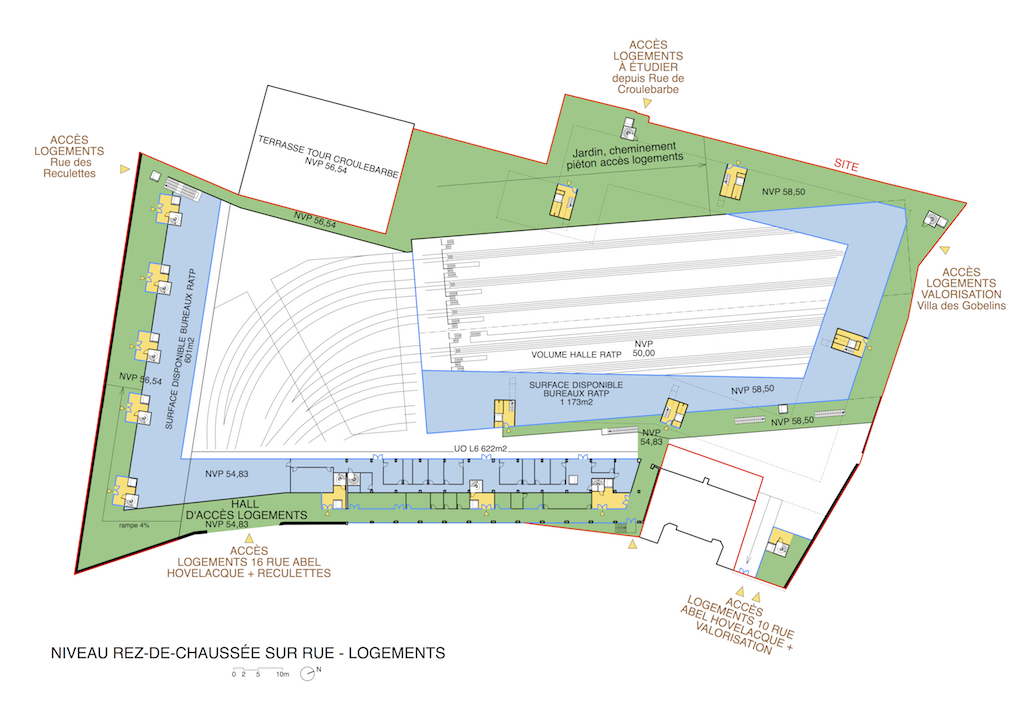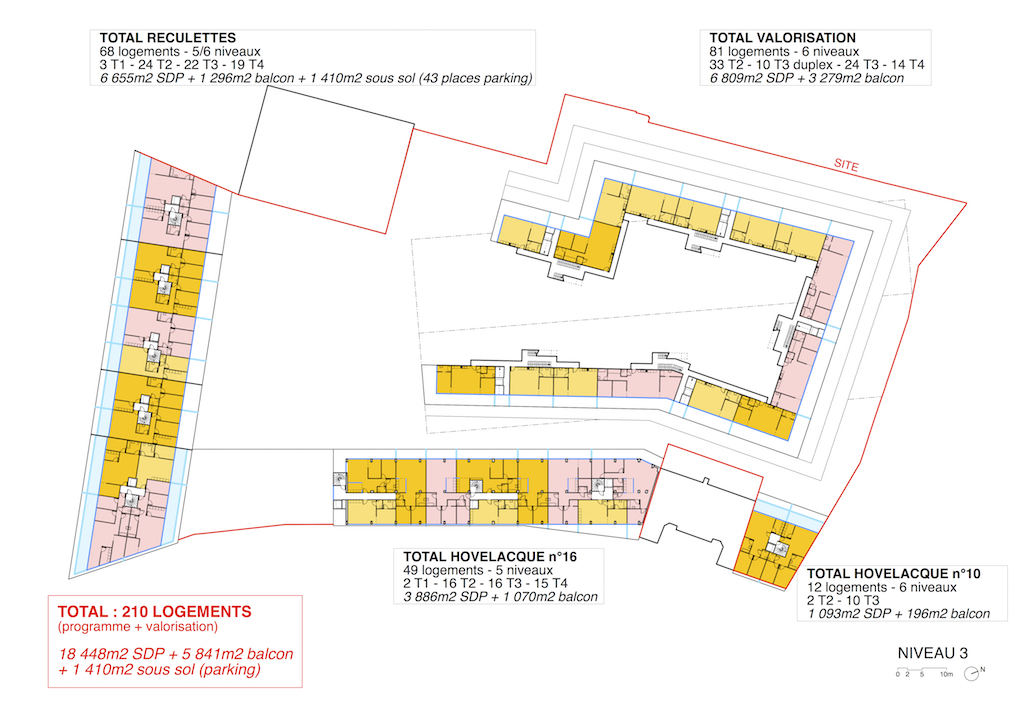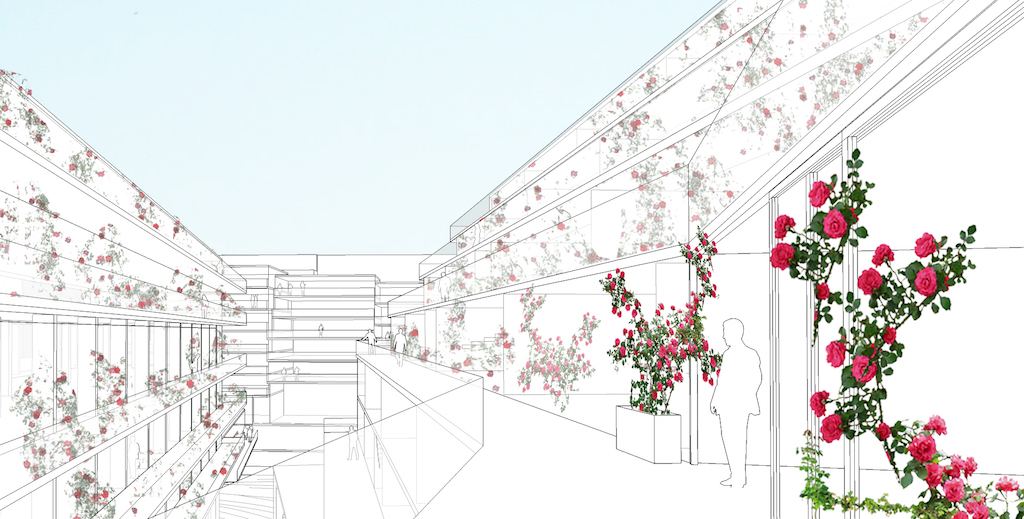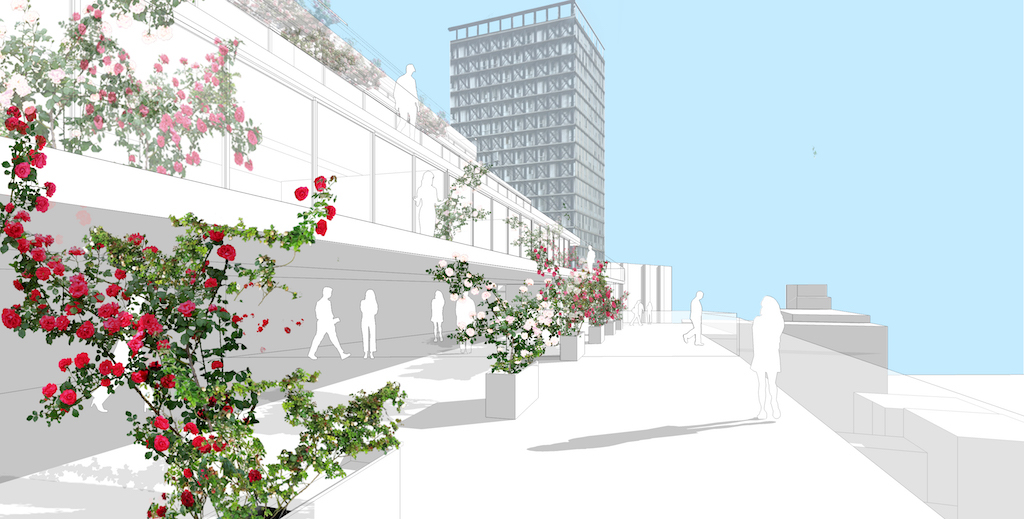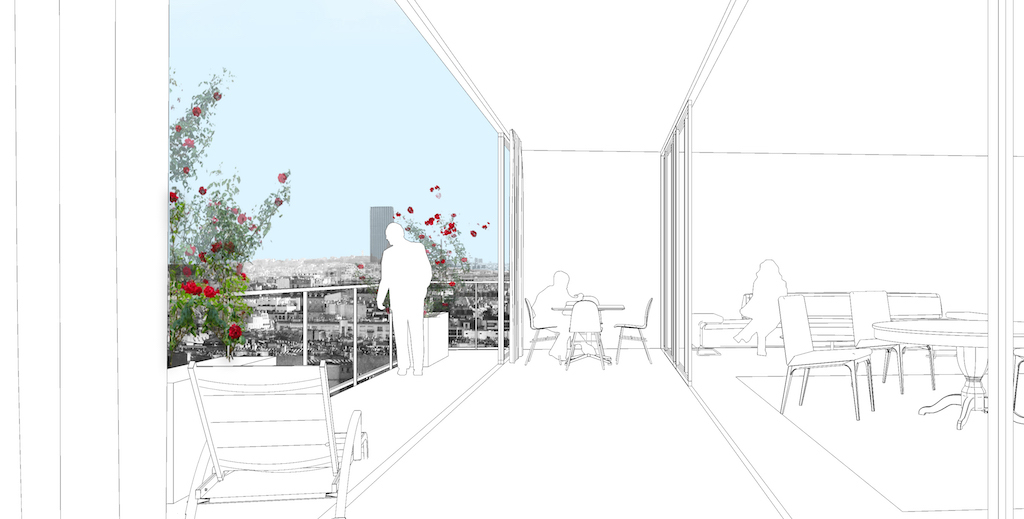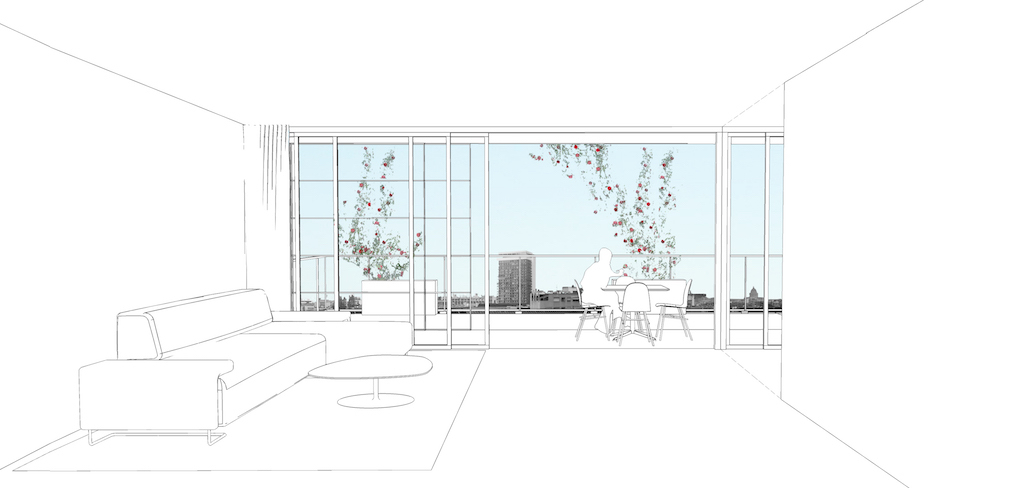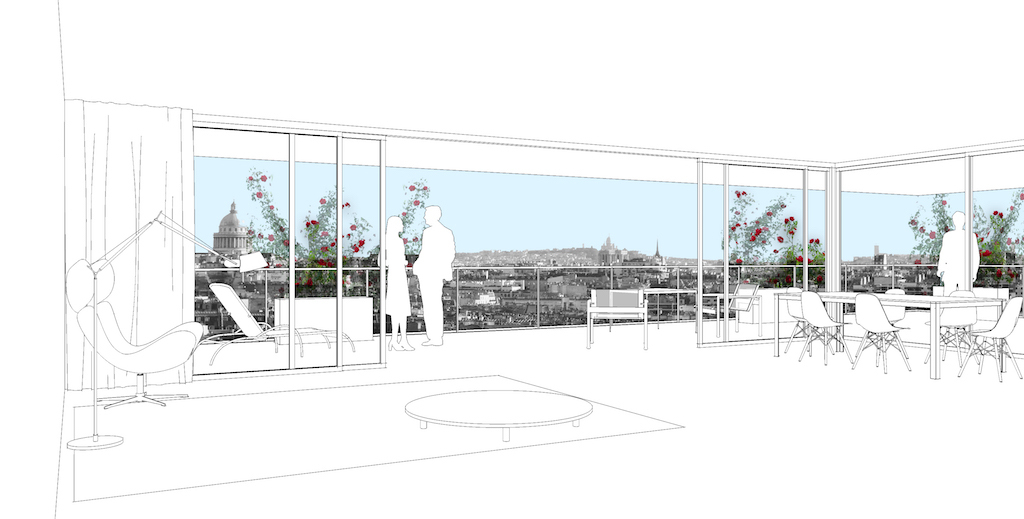Restructuration des ateliers RATP du site d'Italie is a proposal by Lacaton & Vassal for RATP in 2016. It is located in Paris France in an urban setting. Its scale is large with a surface of 25.690 sqm a budget of 48.320.000 € and a ratio of 1.881 €/sqm. Key materials are concrete and glass.
Given the complexity of the site and the operation, the programmatic options that seem to continue to evolve and the long duration of the period of planning for the entire site, it seemed more pertinent to develop an approach towards the project in terms of capacity. The objective of the project is to explore and develop the maximum capacity and density of the site in terms of location, volume and access. In addition, to analyse what would allow for the optimal overall value of the site, a better functioning of the RATP site and the implementation of high quality housing. The proposition is a framework for the project and its intentions that integrates the idea of scalability of program, the margins of evolution and precision and the process of discussion in the study phase. This strategy responds to the three axes set out in the program :
– Installation of the RATP activities under the best conditions of operation and independence. This is achieved through looking for a capacity for evolution of program along with a capacity for extension, thus offering room for manoeuvre for the RATP program.
– The implementation of a program that consists of about 140 high quality units that take advantage of their location above the RATP premises, bordering rue de Hovelacque and rue des Reculettes.
– Enhancement and optimisation of the site capacity beyond the two above-mentioned programs. For a qualitative proposal, the objective of the project in terms of value, is to exploit the constructive capacity of the site, generating a sur-plus value. The challenge is to create new ground, to increase the ground on which construction might occur thanks to the possible superposition. Due to the scarcity of land available for new construction in Paris, ground space is a commodity. Our proposal looks to use the ground capacity generated by the halls to use the right-to-build potential offered by the construction rules.
Another objective is to implement the largest number of units possible from the initial phase. The search for efficiency and performance in the initial phase will allow for the best possible value and absorbance of cost. From the very beginning of this vast project, it will generate a significant positive effect.
Project / urban sketch
This project is based upon a clear separation between housing and RATP activity along with the creation of optimal space and operational conditions for each separate program. Both programs are installed into the site without interference, without crossing paths and with separate, differentiated access points. In this regard, the levels created by the topography of the site are taken advantage of. Thus, two principal levels are defined: The level of the RATP site, 50m NVP : RATP reference level. RATP operation is carried out exclusively at this level. All RATP premises are located within this site. The individual entrance to this site is situated on rue des Reculettes.
The level of the city and housing units, ranging from 54.83 NVP at rue Hovelacque to 58.50 NVP above the halls. This is a reference level, a ground floor for the housing units (named RDC-RUE) that is continuous at site-wide scale. All of the halls are located at this level with the units themselves sitting above. The entrance at rue Hovelacque, along the axis of rue Soeur Rosalie is the access point at one level. This level is shared between two separate sides with no communication between the two. Side courtyard: space allocated for RATP activity. On the street side: space allocated for the housing units. The urban sketch proposes the installation of the program required by the RATP along with the realisation of a complementary programme within the framework the value of the site.
Optimisation of the site capacity
The value of the project concerns the possibility and feasibility of creating superimpositions on the rest of the site; the lanes and courtyards, the halls. We propose to construct above the halls leaving open-air courtyards and tracks. We do not feel that the construction of a platform above the tracks is beneficial. This platform, which is approximately at the level of rue Hovelacque would mean placing the RATP site in a basement situation. It would thus, affect the operation and the quality of use of the RATP site in that the work spaces at the periphery of the courtyard would be deprived of light. On the other hand, it does not offer construction capacity. Given the proximity of the tower and the new building to be constructed at rue des Reculettes, it can only be a public space.
The top of the halls offers significant potential and construction capacity. This project proposes the creation of a residential building that offers the opportunity to create real estate value in a very qualitative manner. The volume of the building is a result of the shape induced by the PLU application with regard to neighbouring building construction combined with the necessity to bring sufficient natural light into the halls. The construction of the housing units simultaneously creates the roof of the halls. The pyramidal volume with outward-facing units creates fire-proof insulation, thus addressing the constraints of the ICPE classification of the halls whilst also bringing natural light into the centre of the halls. Internally, it generates an additional area of activity in the form of a mezzanine above the halls available for an extension of the RATP. This creates a singular, atypical building of high quality housing with large terraces, natural light, open to the sky along with an extraordinary, bright volume inside the halls.

